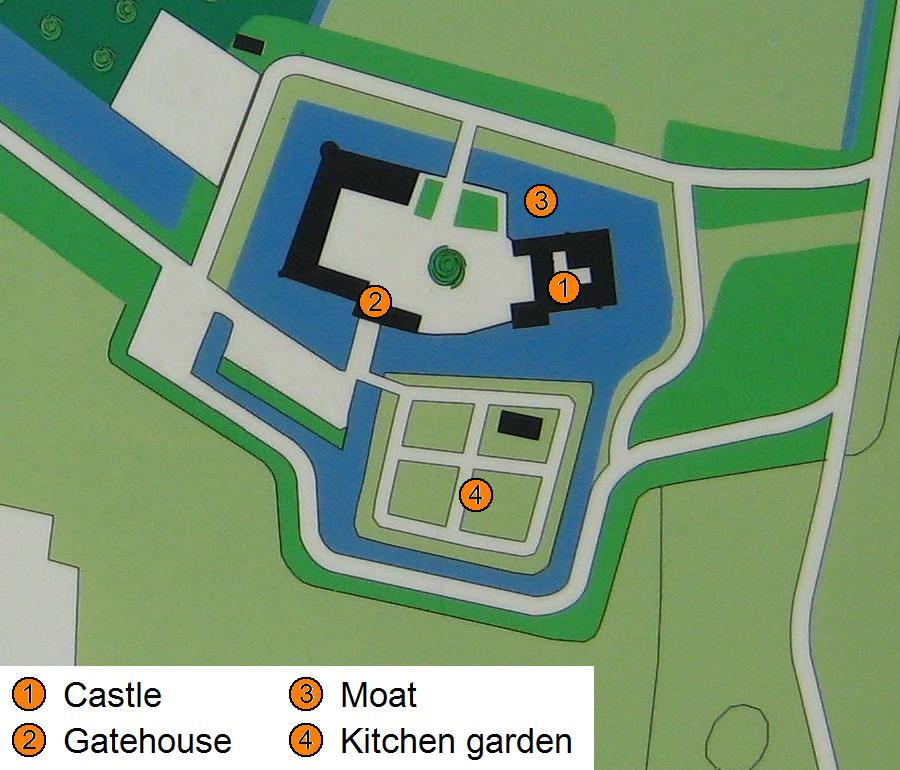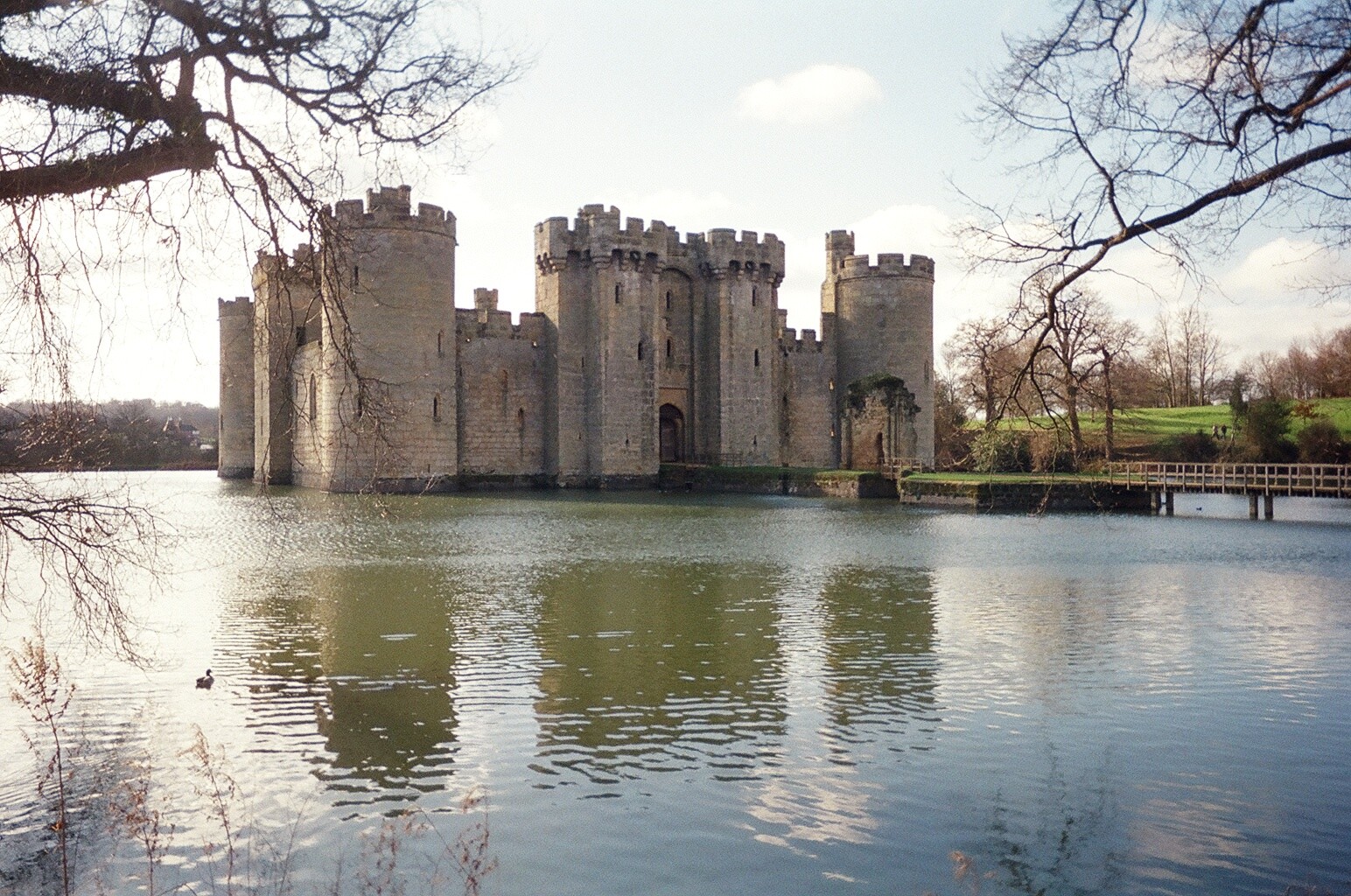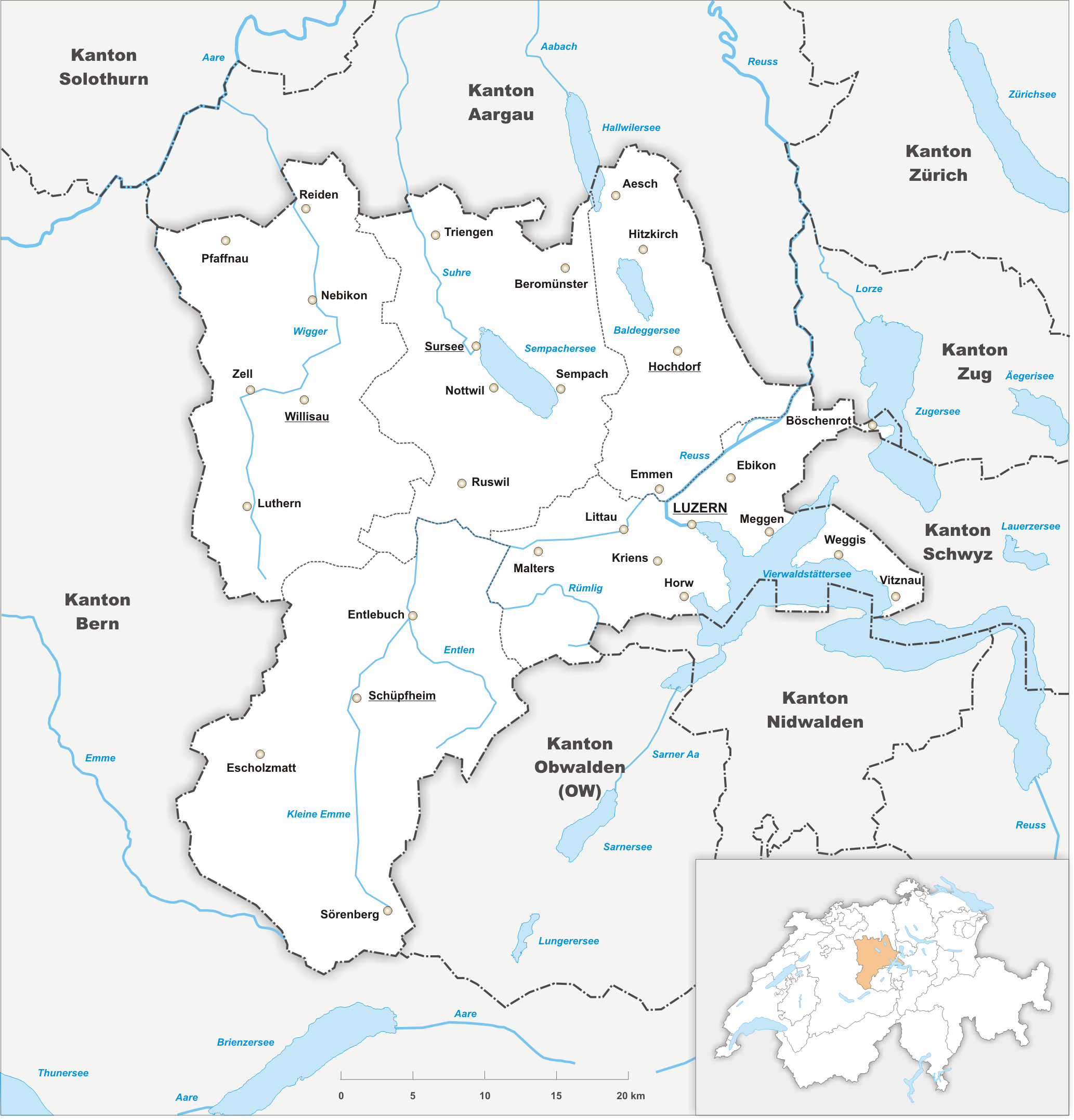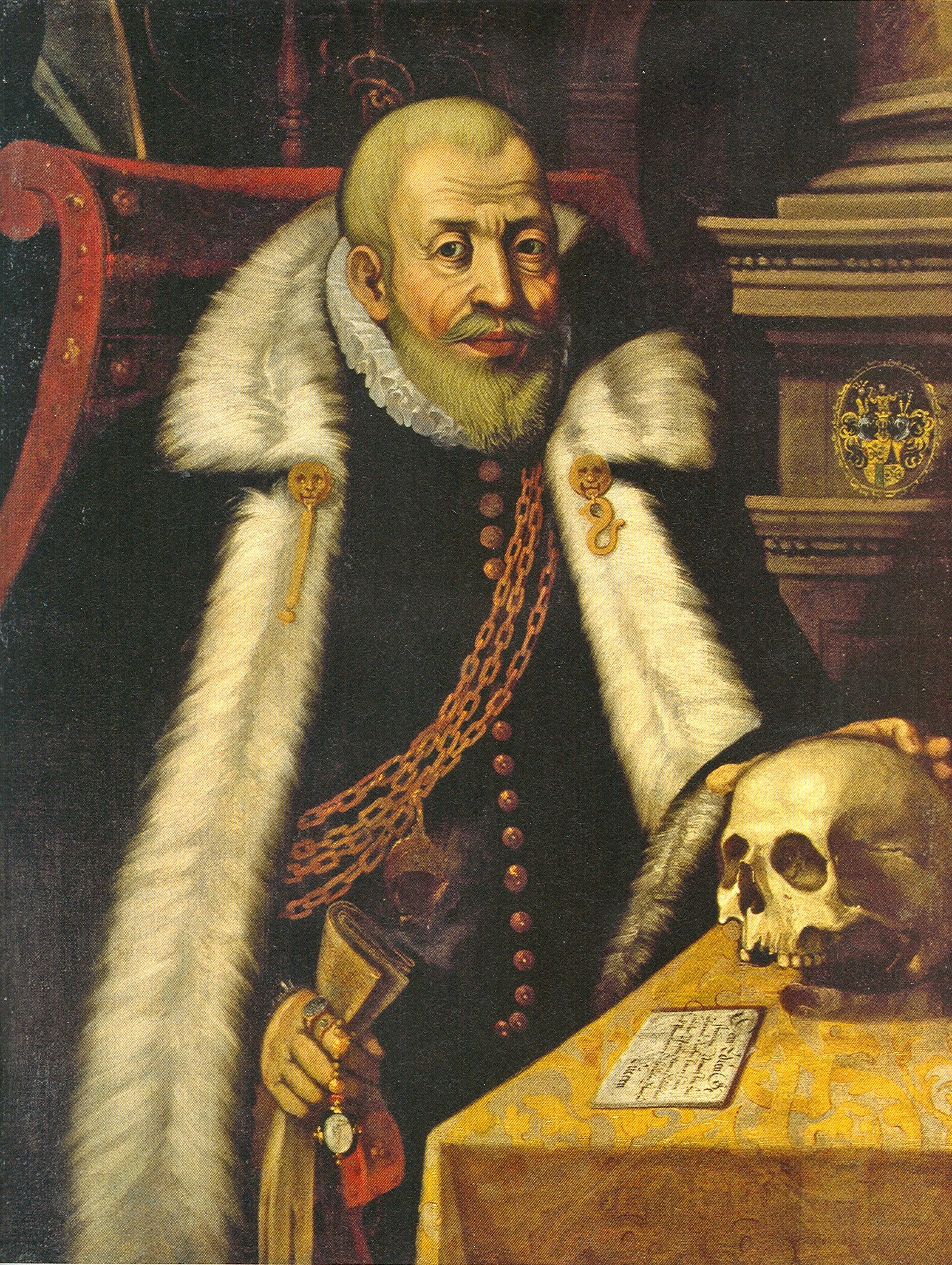|
Wyher Castle
Wyher Castle is a moated castle, which lies south of the village center of Ettiswil in the Canton of Lucerne in Switzerland. It was first mentioned in 1304 as the home of the Freiherr von Wediswil. After passing through several owners, around the end of the 15th century it was acquired by the Feer family. Around 1510, Petermann Feer rebuilt it into a late-Gothic castle. In 1588 it was inherited by Ludwig Pfyffer von Altishofen, whose descendants adopted the name Pfyffer von Wyher. Between 1837 and 1964 it was owned by the Hüsler family, who were local farmers. In 1964 a fire partially destroyed the castle and it was acquired by the canton. Renovations in 1981–83 and 1992–96 repaired the damage and restored the moat. In 1996 it became a museum, housing the Josef Zihlmann collection of local religious art. See also * List of castles in Switzerland This list includes castles and fortresses in Switzerland. Entries list the name and location of the castle, fortress or ... [...More Info...] [...Related Items...] OR: [Wikipedia] [Google] [Baidu] |
Water Castle
A water castle is a castle whose site is largely defended by water. It can be entirely surrounded by water-filled moats (moated castle) or natural waterbodies such as island castles in a river or offshore. The term comes from European castle studies, mainly German ''Burgenkunde'', but is sometimes used in English-language popular science books and websites, and is mentioned in other more academic works. When stately homes were built in such a location, or a Wasserburg was later rebuilt as a residential manor, the German term becomes Wasserschloss, lit. "water palace/manor". Description Forde-Johnston describes such a site as "a castle in which water plays a prominent part in the defences." Apart from hindering attackers, an abundant supply of water was also an advantage during a siege. Topographically, such structures are a type of lowland castle, low-lying castle. Such a castle usually had only one entrance, which was via a drawbridge and that could be raised for protection in ... [...More Info...] [...Related Items...] OR: [Wikipedia] [Google] [Baidu] |
Ettiswil
Ettiswil is a municipality in the district of Willisau in the canton of Lucerne in Switzerland. On January 1, 2006 the municipality of Kottwil, lying several kilometres to the northeast, was incorporated into Ettiswil. accessed 18 August 2009 History  Ettiswil is first mentioned around 1070-90. It was mentioned between 1217 and 1222 as ''Ettiswile''.
Ettiswil is first mentioned around 1070-90. It was mentioned between 1217 and 1222 as ''Ettiswile''.
Geography Ettiswil has an area, , of . Of this area, 73.7% is used for agricultural purposes, while 17.3% is forested. Of the rest of the land, 8.3% ...[...More Info...] [...Related Items...] OR: [Wikipedia] [Google] [Baidu] |
Water Castle
A water castle is a castle whose site is largely defended by water. It can be entirely surrounded by water-filled moats (moated castle) or natural waterbodies such as island castles in a river or offshore. The term comes from European castle studies, mainly German ''Burgenkunde'', but is sometimes used in English-language popular science books and websites, and is mentioned in other more academic works. When stately homes were built in such a location, or a Wasserburg was later rebuilt as a residential manor, the German term becomes Wasserschloss, lit. "water palace/manor". Description Forde-Johnston describes such a site as "a castle in which water plays a prominent part in the defences." Apart from hindering attackers, an abundant supply of water was also an advantage during a siege. Topographically, such structures are a type of lowland castle, low-lying castle. Such a castle usually had only one entrance, which was via a drawbridge and that could be raised for protection in ... [...More Info...] [...Related Items...] OR: [Wikipedia] [Google] [Baidu] |
Canton Of Lucerne
The canton of Lucerne (german: Kanton Luzern rm, Chantun Lucerna french: Canton de Lucerne it, Canton Lucerna) is a canton of Switzerland. It is located in the centre of Switzerland. The population of the canton (as of ) is . , the population included 57,268 foreigners, or about 15.8% of the total population. The cantonal capital is Lucerne. History The canton of Lucerne comprises territories acquired by its capital Lucerne, either by treaty, armed occupation or purchase. The first town acquired was Weggis (in 1380), Rothenburg, Kriens, Horw, Sempach and Hochdorf (all in 1394), Wolhusen and Entlebuch (1405), the so-called "Habsburger region" to the northeast of the town of Lucerne (1406), Willisau (1407), Sursee and Beromünster (1415), Malters (1477) and Littau (1481), while in 1803, in exchange for Hitzkirch, Merenschwand (held since 1397) was given up. Prehistory The oldest traces of humans in the Lucerne area are stone artifacts and cave bear bones found in the Ste ... [...More Info...] [...Related Items...] OR: [Wikipedia] [Google] [Baidu] |
Switzerland
). Swiss law does not designate a ''capital'' as such, but the federal parliament and government are installed in Bern, while other federal institutions, such as the federal courts, are in other cities (Bellinzona, Lausanne, Luzern, Neuchâtel, St. Gallen a.o.). , coordinates = , largest_city = Zürich , official_languages = , englishmotto = "One for all, all for one" , religion_year = 2020 , religion_ref = , religion = , demonym = , german: Schweizer/Schweizerin, french: Suisse/Suissesse, it, svizzero/svizzera or , rm, Svizzer/Svizra , government_type = Federalism, Federal assembly-independent Directorial system, directorial republic with elements of a direct democracy , leader_title1 = Federal Council (Switzerland), Federal Council , leader_name1 = , leader_title2 = , leader_name2 = Walter Thurnherr , legislature = Fe ... [...More Info...] [...Related Items...] OR: [Wikipedia] [Google] [Baidu] |
Freiherr
(; male, abbreviated as ), (; his wife, abbreviated as , literally "free lord" or "free lady") and (, his unmarried daughters and maiden aunts) are designations used as titles of nobility in the German-speaking areas of the Holy Roman Empire and in its various successor states, including Austria, Prussia, Bavaria, Liechtenstein, Luxembourg, etc. Traditionally, it denotes the titled royal and noble ranks, rank within the nobility above ' (knight) and ' (nobility without a specific title) and below ' (count, count, earl). The title superseded the earlier medieval form, '. It corresponds approximately to the English ''baron'' in rank. The Duden orthography of the German language references the French nobility title of ''Baron'', deriving from the latin-germanic combination ''liber baro'' (which also means "free lord"), as corresponding to the German "Freiherr"; and that ''Baron'' is a corresponding salutation for a ''Freiherr''.Duden; Definition of ''Baron, der'' (in German)/ref> ... [...More Info...] [...Related Items...] OR: [Wikipedia] [Google] [Baidu] |
Gothic Architecture
Gothic architecture (or pointed architecture) is an architectural style that was prevalent in Europe from the late 12th to the 16th century, during the High and Late Middle Ages, surviving into the 17th and 18th centuries in some areas. It evolved from Romanesque architecture and was succeeded by Renaissance architecture. It originated in the Île-de-France and Picardy regions of northern France. The style at the time was sometimes known as ''opus Francigenum'' (lit. French work); the term ''Gothic'' was first applied contemptuously during the later Renaissance, by those ambitious to revive the architecture of classical antiquity. The defining design element of Gothic architecture is the pointed or ogival arch. The use of the pointed arch in turn led to the development of the pointed rib vault and flying buttresses, combined with elaborate tracery and stained glass windows. At the Abbey of Saint-Denis, near Paris, the choir was reconstructed between 1140 and 1144, draw ... [...More Info...] [...Related Items...] OR: [Wikipedia] [Google] [Baidu] |
Ludwig Pfyffer Von Altishofen
Ludwig Pfyffer (1524, Lucerne – 17 March 1594) was a Swiss military leader, spokesman for Roman Catholic interests in the cantons, chief magistrate of Lucerne, and probably the most important Swiss political figure in the latter half of the 16th century. Early career For many years an active and intrepid warrior in the service of France, Pfyffer won fame by safely leading the royal family of Charles IX from Meaux to Paris while under Huguenot attack (1567). Defender of Catholic Church Elected chief magistrate for Lucerne in 1571, Pfyffer ruled there until his death. He made the city the centre of Catholic Counter-Reformation activity in Switzerland. His Golden League (1586) (also called the Borromean League after Cardinal Carlo Borromeo) nearly led to the destruction of the Swiss Confederation. The alliance of the seven Catholic cantons pledged itself to use armed force to expel heretics. Its elevation of religious interests severely strained the civil union. The canton o ... [...More Info...] [...Related Items...] OR: [Wikipedia] [Google] [Baidu] |
List Of Castles In Switzerland
This list includes castles and fortresses in Switzerland. Entries list the name and location of the castle, fortress or ruins in each Canton in Switzerland. Aargau Appenzell Ausserrhoden Appenzell Innerrhoden Basel-Land Basel-Stadt Bern Fribourg Geneva Glarus Graubünden (Grisons) Jura Lucerne Neuchâtel Nidwalden Obwalden Schaffhausen Schwyz Solothurn St. Gallen Ticino Thurgau Uri Vaud Valais Zug # Buonas Castle, Risch # Freudenberg Castle, Risch-Rotkreuz # Hünenberg Castle, Hünenberg # St. Andreas Castle, Cham # Wildenburg Castle (Zug), Baar # Zug Castle, Zug Zürich # Au Castle, Wädenswil # Ruins of Baldern Castle, Stallikon # Ruins of Oberes Baliken Castle, Wald # Ruins of Bernegg Castle, Hinwil # Ruins of Alt-Bichelsee Castle, Bichelsee # Ruins of Breitenlandenberg Castle, Turbenthal # ... [...More Info...] [...Related Items...] OR: [Wikipedia] [Google] [Baidu] |



.jpg)
